#russian lesbian
Text

a little late but still........happy pride month!
#lesbian#femme#femme lesbian#lgbt pride#lgbtq#sapphic#sapphic for sapphic#brunette babes#girl who loves girls#girlwholikesgirls#brunette babe#gay#glg#wlw#russian#russian lesbian#men dni#me
30 notes
·
View notes
Text
so, today we, russian queers, may become "extremists" by decision of russian supreme court and thus our existence will be silenced and erased. any queer activism will be impossible for us. I don't know what to do anymore. I was heartbroken when they passed the laws about "gay propaganda" and transgender people, now I'm just numb. I don't want to escape. I just want to live safely in my own country.
please hear us.
#lgbtq#lgbtqia#lgbtq community#lgbtqia rights#lgbtq rights#lgbt+#lgbt rights#russia#russian lgbtq#lesbian#gay#bisexual#trans#transgender#queer#queer rights#russian queers
59K notes
·
View notes
Text
Eddie, in the middle of a live-stream: Hey, Stevie. I was thinking about something you said the other day and I’ve got a question
Steve: …Oh-kay?
Eddie: The other day you said that your parents used to make you go to benefit dinners with the mayor, right? Mayor Kline?
Steve: Um, yeah? I think. They were donors. They campaigned for him.
Eddie: Uh-huh. That’s what I thought.
Eddie: So.
Eddie: Your parents helped fund you being drugged and tortured by Russians.
Steve:
Steve, taking all this in: Huh.
Eddie: Huh, indeed.
#Steve: I can’t believe my parents are responsible for my lesbian wife getting hurt!#Fans looking into this mayor and learning what he was arrested for: Wait was he really tortured by Russians?#Their FBI agent: *bangs head against the desk*#eddie munson tiktok saga#steve harrington#eddie munson
968 notes
·
View notes
Text
So gay for her

#natasha lyonne#but im a cheerleader#gay#lesbian#queer pride#russian doll#orange is the new black#oitnb#crush#hopelessly in love#celebrity crush#love#crushes
333 notes
·
View notes
Text
"i haven't met a single lesbian who doesn't listen to girl in red" you clearly have not met a lot of lesbians.
#yes chat. generalizing is bad even when you do it.#im a lesbian. i listen to the taxpayers and the mountain goats.#my ex is a lesbian. she listens to mcr and gorillaz.#my friend is a lesbian. he listens to merm4id and pjsekai groups.#my parent is a lesbian. they listen to latin-american pop and showtunes.#my mom is a lesbian. she listens to russian rap.#lesbian music taste is amazing in its diversitt#dont simplify and generalize us pls and thanks
386 notes
·
View notes
Text
LGBT literature of the 1860s–1910s. Part 5
After a long pause, the list is back! Here we have a couple of plays, accounts by two trans women, lesbian poetry, and more.
1. Despised and Rejected, by A.T. Fitzroy (Rose Allatini; 1918). A pacifist novel published during World War One? With gay and lesbian characters? Yes, that was sure to get people in trouble. Its publisher was fined and the judge called it “morally unhealthy and most pernicious”. So, Dennis is a young composer who hates violence and therefore refuses to go to war. He also suffers because he is a “musical man”, that is, gay, and loves Alan, art-loving son of a wealthy businessman. His friend Antoinette, meanwhile, is “strangely attracted” to a woman. Nevertheless, the two attempt to love each other. When the war begins, Alan appears in Dennis’ life again, and they try to avoid being sent to the front together. Alan also persuades Dennis to accept who he is. Edward Carpenter himself defended the novel, saying that “the book is also a plea for toleration of a very much misunderstood section of humanity”.
Read online
2. Autobiography of an Androgyne, by Ralph Werther (1918). Ralph Werther, also known as Jennie June, wrote this autobiography for doctors, and it is very revealing. Being a New York fairy (male prostitute) and possibly a trans woman, they tell frankly about the city’s gay underworld of the early 20th century and their personal experience, which is sometimes too frank and dark perhaps, but all the more interesting.
Read online
3. Poems by Mikhail Kuzmin. Kuzmin was not just the author of Russia’s first gay novel, but also a poet. Many of his works were dedicated to or mentioned his lovers. I’d recommend Where Will I Find Words (in English and Russian), Night Was Done (both in English and Russian), from the 1906-1907 collection Love of This Summer (available fully in Russian), mostly based on his love affair with Pavel Maslov in 1906. And also If They Say (in English and Russian), which is a great statement.
4. The Loom of Youth, by Alec Waugh (1917). A semi-biographical novel based on Evelyn Waugh’s older brother’s experience at Sherborne School in Dorset. It is a story of Gordon Caruthers’ school years, from the age of 13 to 19, and it is full of different stories typical for public schools, be it pranks and cheating exams or dorm life and sports. Although the homosexual subject was quite understated, the author implied that it was a tradition and open secret in public schools. The book became popular and soon caused a great scandal. Worth noting that before that Alec was expelled for flirting with a boy.
Read online
5. Two Speak Together, by Amy Lowell (1919). Lowell was a famous American poet and lesbian. Many of her poems were dedicated to her lover, actress Ada Dwyer Russell, specifically the section Two Speak Together from Pictures of the Floating World. These poems are infused with flower imagery, which wasn’t uncommon for lesbian poetry of the time.
Read online
6. De berg van licht/The Mountain of Light, by Louis Couperus (1905-1906). Couperus is called the Dutch Oscar Wilde for a reason: this is one of the first decadent novels in Dutch literature. It is also a historical one, telling about a young androgynous Syrian priest Heliogabalus who then becomes a Roman Emperor. Homoerotism, hedonism, aestheticism: Couperus creates a very vivid world of Ancient Rome. He also covered the topic of androgyny in his novel Noodlot, which was mentioned in Part 3 of this list.
Read online in Dutch
7. Frühlings Erwachen/Spring Awakening/The Awakening of Spring, by Frank Wedekind (1891, first performed in 1906). This play criticized the sexually oppressive culture prevalent in Europe at the time through a collection of monologues and short scenes about several troubled teens. Each one of them struggles with their puberty, which often leads to a tragic end. Like in The Loom of Youth, homosexuality is not the central focus of the play, but one character, Hänschen, is homosexual and explores his sexuality through Shakespear and paintings. The play was later turned into a famous musical.
Read online in German or in English
8. Twixt Earth and Stars, by Radclyffe Hall (1906). Though it wasn’t known to many at the time, these poems were dedicated to women, some to Hall’s actual lovers.
Read online
9. The Secret Confessions of a Parisian: The Countess, 1850-1871, by Arthur Berloget (published in 1895). This account is similar to the Autobiography of an Androgyne, albeit shorter. The author nowadays is thought to be a trans woman. They describe their love for women’s dresses, the euphoria from wearing dresses, makeup and wigs, the life as a “female impersonator” in Parisian cafe-concerts, and their love affair with a fellow prisoner. The autobiography is not available online, but you can read it in Queer Lives: Men’s Autobiographies from Nineteenth-Century France by William Peniston and Nancy Erber.
10. At Saint Judas’s, by Henry Blake Fuller (1896). This is possibly the first American play about homosexuality. It is very short. An excited groom is waiting for his wedding ceremony in the company of his gloomy best man. They are former lovers, and this short scene is not going to end well…
Read online
Previous part is here
#lgbt literature#lgbt fiction#queer history#queer fiction#lesbian literature#russian literature#gay literature#gay history#spring awakening#lesbian history#blog: history#blog: literature
261 notes
·
View notes
Text

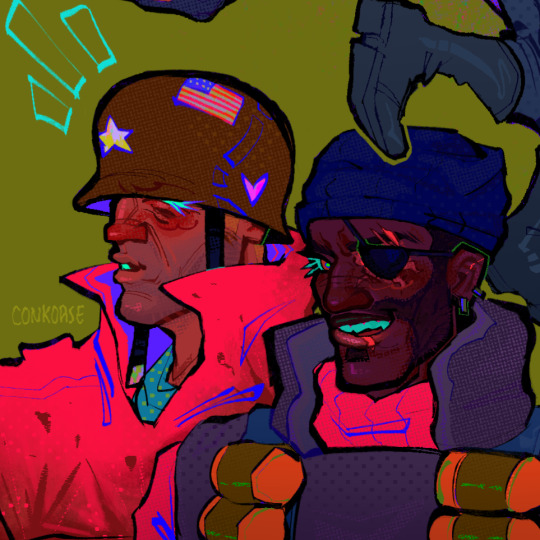




im back haiii (〃´▽`)
#hi she/her for all of them pls and ty eigjteen android heart emoji#tf2#team fortress 2#tf2 fanart#spoovy#russian roulette#sniper#soldier#demoman#heavy#spy#when am i going to draw them actually kissing i still havent done it yet LMFAOOO#spoovy lesbian yuri will be real in 45 seconds...#conk crap
567 notes
·
View notes
Text
today, the supreme court of russia declared the non-existent "international lgbt movement" extremist. today, the supreme court of russia declared all russian queers to be extremists. they declared love and freedom illegal, extremist, and criminally punishable. some time before that, "gay propaganda" was banned in russia. this concept includes even the simplest manifestations of love. we cannot talk about ourselves, we cannot save ourselves, we cannot love, feel loved and protected in our country. if we fight for ourselves, we will go to jail. we were forbidden not only to love — they banned us. ordinary people who simply do not fit into their concept of "traditional" and "correct". so please
talk about us. hear us out. help us if you can.
#lgbt#lgbt+#lgbtq#lgbtqia#lgbtq community#lgbtqia rights#lgbtq rights#lgbt+ rights#lgbt rights#russia#russian lgbtq#russian lgbt#queer rights#queer community#queerphobia#lgbtphobia#homophobia#transphobia#lesbian#gay#bisexual#transgender#trans#gay rights#lesbian rights#bisexual rights#trans rights#queer#russian queers#discrimination
169 notes
·
View notes
Photo
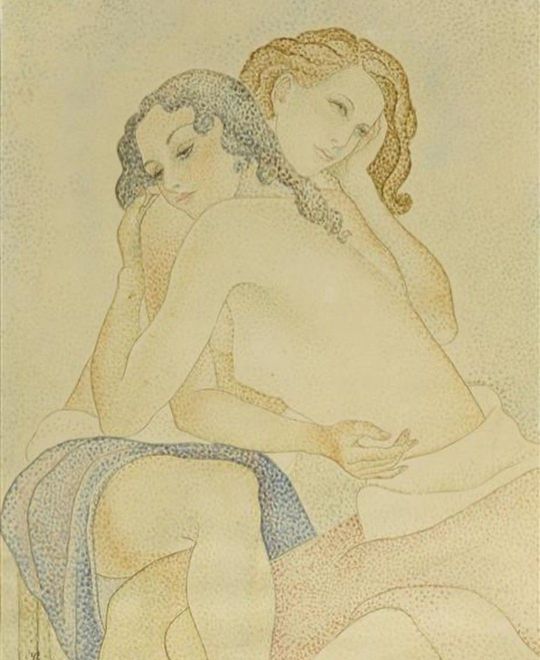

Marie Vorobieff (1892-1984):
I. Portrait of the Artist's Daughter, Marika (Rivera), aged 23, with a Lover (1942)
II. Two Young Women (1943)
#art#art history#marie vorobieff#marevna#russian#lesbian#lesbian art#wlw#women#women artists#female artists#women painters#female painters#watercolour#watercolour on paper#oil#oil on panel#fine art#drawing#painting#pointillism#expressionism#XXth century#20th century#female homosexuality#intimacy tag
735 notes
·
View notes
Text

visiting family back in russia, so good to be back home
#lesbian#femme#femme lesbian#lgbtq#lgbt pride#brunette#gay#gay girl#brunette babe#sapphic#sapphic 4 sapphic#wlw#women who love women#girl who loves girls#glg#girlwholikesgirls#girl who likes girls#russian#russian lesbian#me
37 notes
·
View notes
Text
всем, кому нужно сейчас это услышать:
вы не одни. нас много, и никто не сможет заставить нас замолчать. оставайтесь сильными, продолжайте бороться, не прекращайте любить. мы переживём этот мрак – и после бури обязательно появится радуга. 🫂🏳🌈🏳️⚧️
#lgbtqia rights#lgbt+#lgbtq rights#lgbtq community#russian queers#russian queer rights#russian lgbtq#russian lgbtqia#lesbian#gay#bisexual#trans#trandgender
359 notes
·
View notes
Text
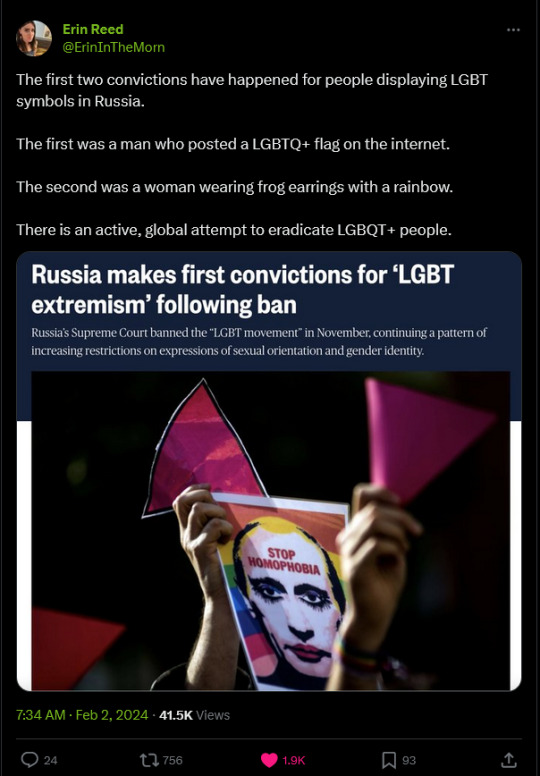
#russia#queer#lgbtq#lgbtq community#lesbian#lgbt pride#nonbinary#sapphic#nonbinary lesbian#lgbtqia#gay girls#ukraine#kyiv#ukranian#crimea#odesa#russian#german#vladimir putin#putin#stop putin#fuck putin#nato#russian aggression#pride#trans pride#gay pride#pride flags#lesbian pride#lgbt
125 notes
·
View notes
Text
Vera Ignatievna Gedroits - the openly lesbian, first woman professor of surgery in Russia, who worked alongside the Romanovs

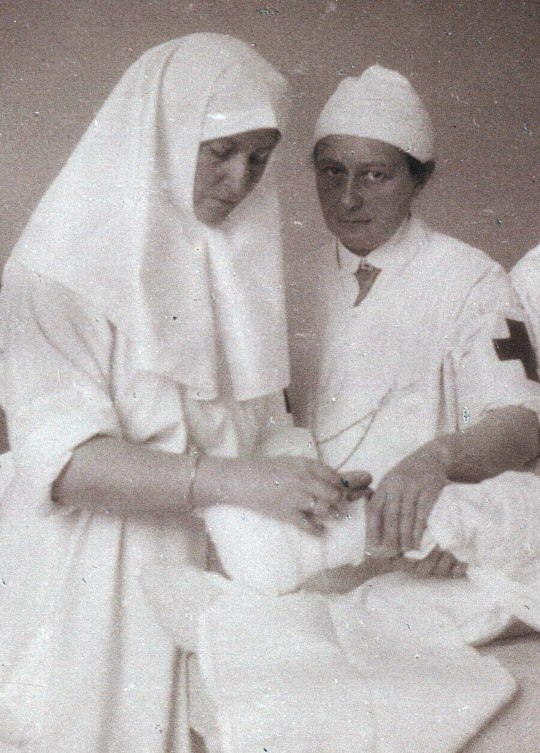
Princess Vera Ignatievna Gedroits was a doctor, surgeon, poet, and pioneer of medicine. Vera worked alongside Tsarina Alexandra and Grand Duchesses Olga and Tatiana Nikolaevna, working with the Red Cross to treat injured soldiers during the First World War.
** content warning for mention of suicide **
Born as a Princess of royal Lithuanian descent in 1870 in Kyiv, Vera is thought to have developed an interest in medicine following the passing of her little brother Sergei during childhood. Vera later wrote under the pen name ‘Sergei Gedroits’ in honour of him.
In 1892, Vera was arrested for participating in the Populist movement. Freed and undeterred, Vera was adamant to continue her medical studies. An open lesbian, Vera entered into a marriage of convenience with friend Nikolai Belozerov, permitting the obtaining of a new passport to travel, allowing her to pursue her dream of a medical career without the restriction of borders and her previous name being on police records. Despite their marriage being one of convenience, rather that romantic love, Vera and Nikolai were close friends, and stayed in contact through letters.
In 1903, Vera obtained the title of ‘female doctor’, but later that year attempted suicide. Vera’s mental health had declined due to an overwhelming personal family life, the death of her sister, exhausting workload, and breakup of a relationship with a lady in Switzerland. The following year, Vera had recovered, and the outbreak of the Russo-Japanese war led to her working in horse-drawn mobile hospitals.
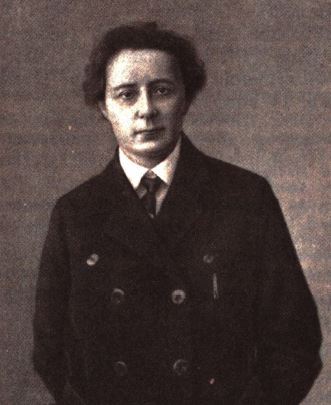
Working with wounded patients, Vera took detailed notes which allowed the making of the connection between injuries and the weapon used to inflict them. Interestingly, Vera did not shy away from abdominal operations, which was irregular due to previous thoughts that such injuries were ‘inoperable’. Often, patients with such injuries were refused surgery and were sadly left to pass away.
Following the War, Vera worked provincially, attending to 125,363 patients. This pioneering work was recognised by Tsarina Alexandra Feodorovna in 1909, who invited Vera to take the position of Senior Court Physician. Vera was the first woman to serve as a physician in the Imperial Palace. Vera wrote ‘Conversations on Surgery for Sisters and Doctors’ to help the Palace understand the profession. Vera would eventually write 58 scientific papers. Vera earned a Doctorate of Surgery on May 11 1912, the first woman in the history of the University of Moscow to do so.
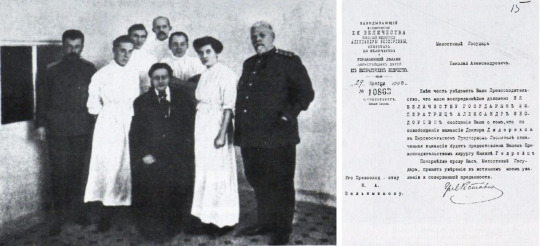
Following the outbreak of the First World War, Vera helped to install physiotherapy equipment and X-ray machines in hospitals to aid recovery. Vera taught Tsarina Alexandra Feodorovna and her daughters, Grand Duchesses Olga and Tatiana, medical work, and they assisted with operations. Vera worked alongside Imperial Physician Dr. Evgeny Botkin to help connect infirmaries to railways and supplies. Vera occasionally travelled to the front lines to help provide surgery directly at the scene, and in one case performed over 30 operations over a three day period.
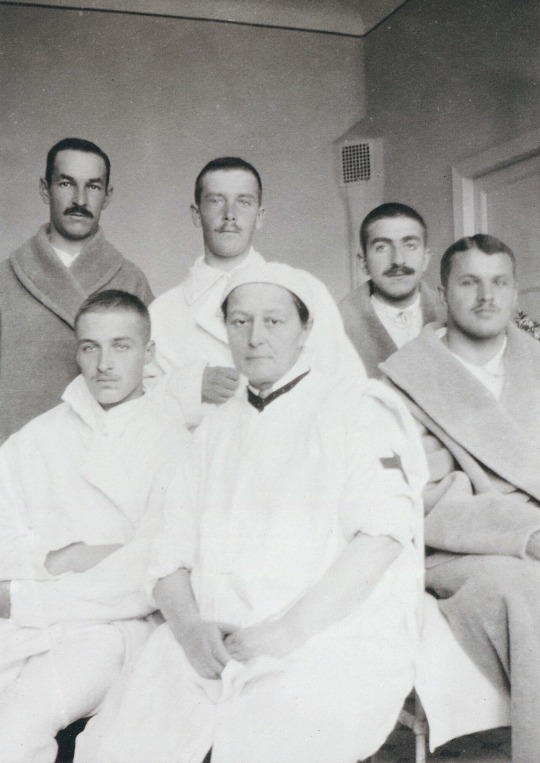
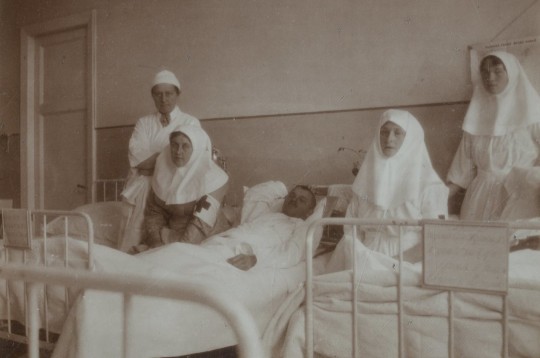
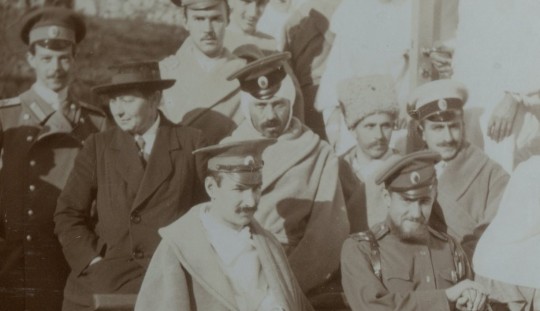
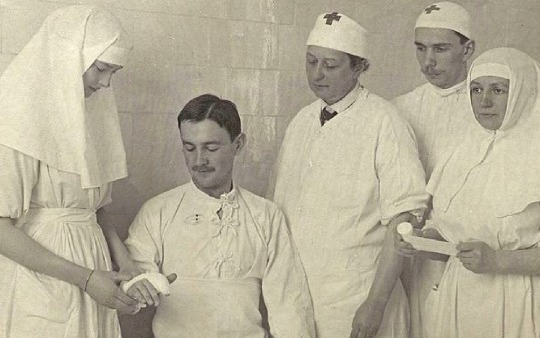
Vera is recorded as having little patience for the infamous Grigori Rasputin, with one source recording the shoving of Rasputin ‘into a corridor when he refused to get out’ of the way.
There are no records that suggest that the patients or the Romanovs objected to Vera's sexuality, though there was disapproval of her continuing to remain in Tsarskoe Selo to continue military surgery after the Revolution. If anything, she was renowned as one of the most capable and intelligent women of the era. Vera wore a surgeon's cap rather than the head coverings that nurses and Sisters of Mercy wore.
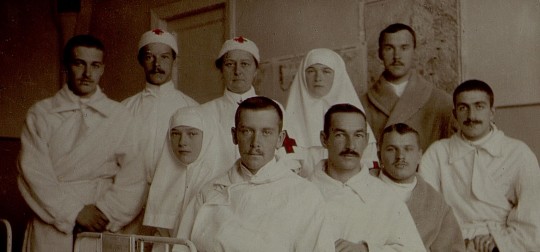


During the First World War, Vera met fellow nurse Countess Maria Dmitrievna Nirod-Mukhanova, a widowed maid-of-honour at the palace. The pair fell in love and started a relationship, which would last for the rest of Vera’s life. Maria had three children: Dmitri Feodorovich, Marina Feodorovna, and Feodor Feodorovich. The children knew about their mother's relationship with Vera, as they lived as a married couple whilst caring for and raising them. Some sources suggest that Vera and Maria had a marriage ceremony.

By the late 1920s, Vera was living with Maria, who worked as a surgeon, in Kyiv after the couple and Maria’s children escaped Revolution, taking refuge with monks. They spent eighteen years together. The pair lived as a married couple. In 1932, Vera passed away aged 61 after a diagnosis of uterine cancer. Maria continued Vera’s work by operating a pharmacy that provided free medicine to the poor. Maria passed away in 1965 aged 86. The above image is the only photo that has been attributed to her.
Vera defied all the social norms, becoming a pioneer of medicine and challenging traditions within the profession, saving thousands of lives in the process. Vera’s legacy lives on today.
SOURCES:
Hands that bring back to life. Vera Ignatievna Gedroits - surgeon and poet by V.G. Khokhlov
Beinecke Rare Book and Manuscript Library
Wartime albums of Olga Nikolaevna and Tatiana Nikolaevna, Last Romanovs on Flickr
The Princess who Transformed War Medicine - BBC
Princess Vera Gedroits: military surgeon, poet, and author by J.D.C. Bennet
The Diary of Olga Romanov : Royal Witness to the Russian Revolution by Helen Azar
Tatiana Romanov, Daughter of the Last Tsar : Diaries and Letters, 1913-1918 by Helen Azar and Nicholas B.A. Nicholson
#Vera Gedroitz#Vera Gedroits#lgbt history#lesbian history#Alexandra Feodorovna#Olga Nikolaevna#Tatiana Nikolaevna#Maria Nirod Mukhanova#medical history#Russian history#pride month#tw sui#image described#queer history
239 notes
·
View notes
Text



dsaf oc ezra, shirtless henry aand anime davesport what more could you ask for
#my art#dsaf#dayshift at freddys#henry miller#davesport#dave miller#jack kennedy#dsaf oc#ezra#i. dont have a last name yet ill update when i do#she/they pronouns for ezra#russian-estonian fat nb butch lesbian dsaf oc. whos also 39 yrs old.#the fandom is not ready for it
97 notes
·
View notes
Text
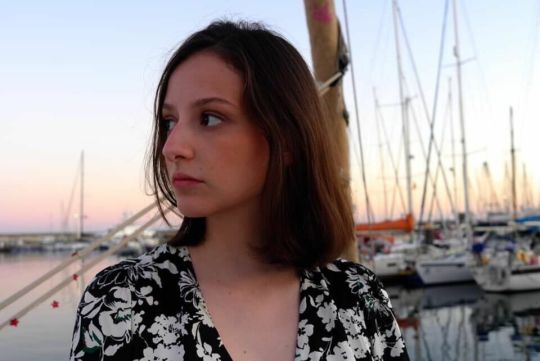
Lucy Shtein
Gender: Female
Sexuality: Lesbian/Queer
DOB: 2 July 1996
Ethnicity: Ashkenazi Jewish
Nationality: Russian
Occupation: Activist
Note: Member of Pussy Riot
#Lucy Shtein#queerness#lgbt#lgbtq#femme#female#lesbian#queer#1996#jewish#ashkenazi jewish#russian#activist
43 notes
·
View notes
Note
could you please draw a cat emote holding the progress flag?


the old version and a new one! also a few other flags with the new one:
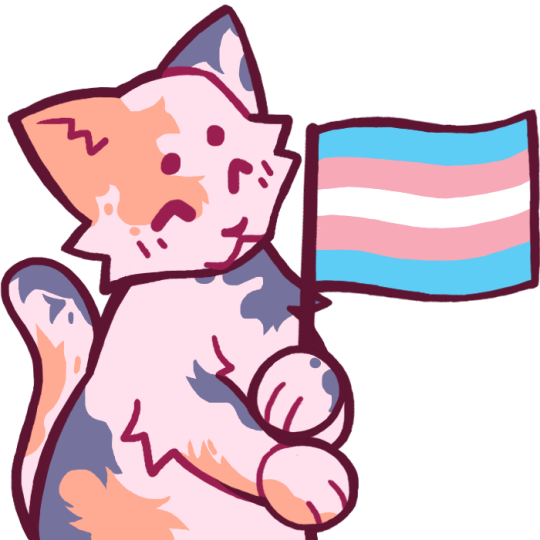
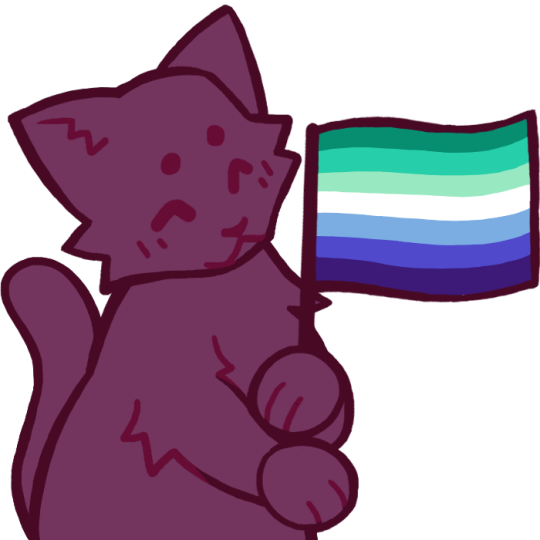
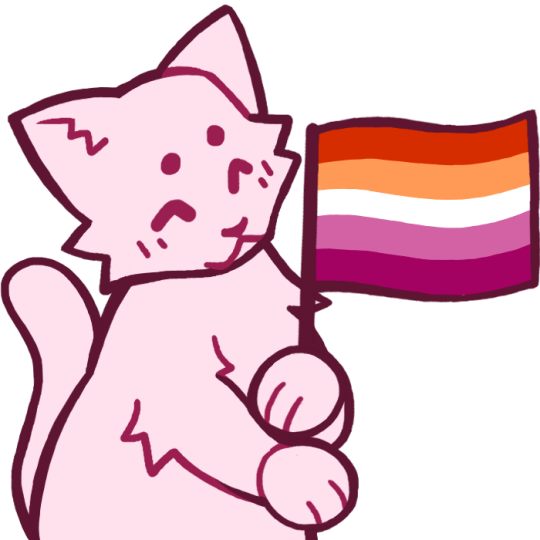


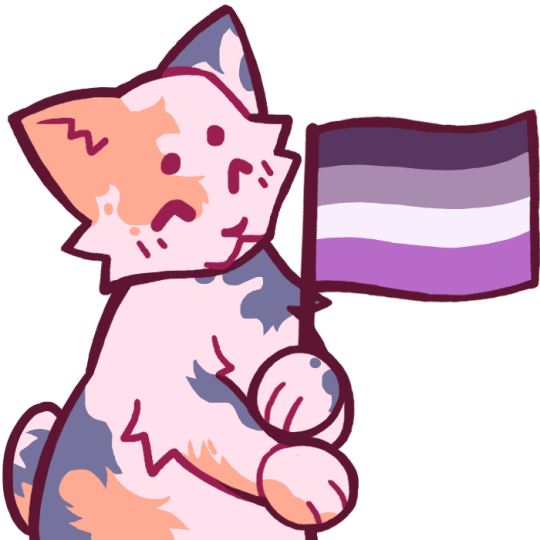
#custom emotes#pride emotes#cat emotes#cat#progress flag#trans#mlm#gay#lesbian#aroace#aro#ace#aromantic#asexual#white cat#black cat#calico cat#russian blue cat#orange cat
790 notes
·
View notes